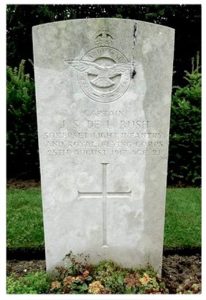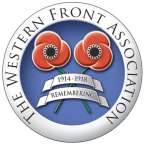41 Squadron, Royal Flying Corps

John Stewart de Lisle Bush was born in 1896, the son of Alfred George and Florence Katherine de Lisle Bush (nee Lysaght). He was the eldest of three sons and a daughter. His father was an iron merchant and the family lived at Eastington Park, Stonehouse, Gloucestershire. John was educated at Cheltenham College and on 8 August 1914 he joined the 3rd Battalion, Somerset Light Infantry (SLI) and arrived in France on 6 September that year.
On 5 November 1914 he received a bullet wound in his right calf and was repatriated to the UK and did not return to the BEF until early 1916 when he was almost immediately admitted to hospital in Boulogne with measles.
Having recovered he returned to the SLI on 1 May 1916 and transferred to the Royal Flying Corps as a Lieutenant, on 27 July of that year, going on to qualify as a pilot and being promoted to Captain in 1917.
At 5.26am on 25 August 1917 he took off from Lealvillers aerodrome, between Doullens and Albert, flying an Airco DH5 of 41 Squadron, on an offensive patrol. One hour later, over Warlencourt-Selivigny, he encountered an Albatross DV piloted by Major Josef Mai of Jasta 5. He was shot down, this being the second of what eventually would become thirty victories for that officer. He survived the crash but such was the extent of his injuries that he died the next day. Initially he was reported as missing and it was not until 14 December that his family received word, via the Red Cross in Geneva, that he was dead.
Captain John Stewart de Lisle Bush now lies in Honnechy British Cemetery, south west of Le Cateau and is commemorated on the Eastington War Memorial along with his older brother, Hugh, who died on 17 January 1917, the result of wounds received at Loos in September 1915.
